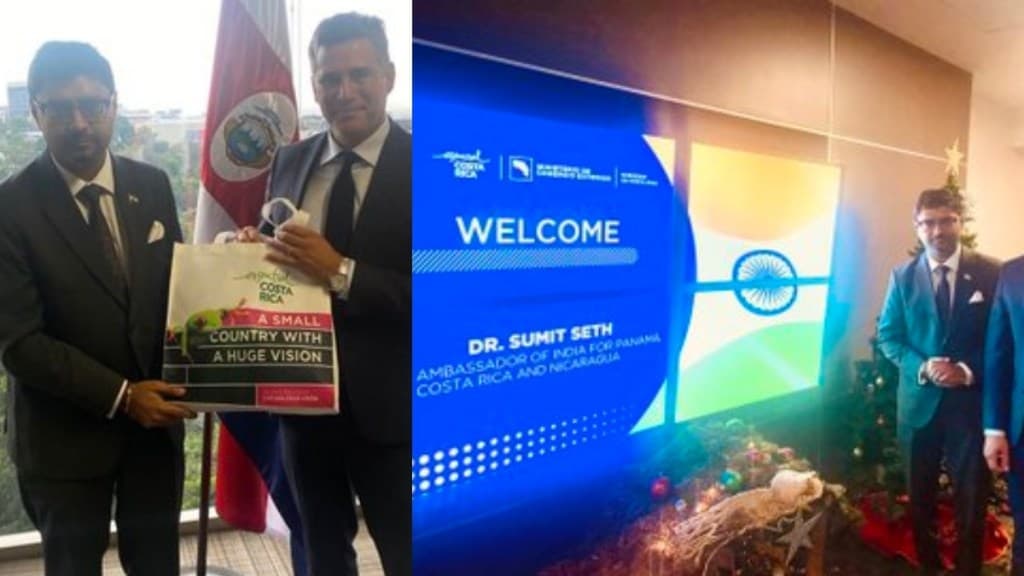By Syed Ali
India’s engagement with Central America has witnessed a tremendous upswing in recent years. With high-level delegations shuttling between adjacent hemispheres, the journey thus far has been arduous yet adventurous. Trade and international cooperation have been the linchpin of the relationship with the region, with all countries being part of the Emerging and Developing group within the Global South.
India has a lot to offer and benefit from this relationship, in addition to expanding its trade basket, exporting digital services, pharmaceuticals, including technical and outer-space cooperation. Recently, India, through its Embassy in Panama with the concurrent charge of Nicaragua and Costa Rica, signed an MoU with Nicaragua, making it the first Spanish-speaking country to recognize Indian pharmaceutical standards.
This is the latest milestone in a series of recent diplomatic successes between India and Central American countries. Both sides have made diligent efforts to translate cooperation through coordination and communication to capitalize on the rising India, poised to be the next hub for global investments and manufacturing in the post-COVID world order. The most recent accomplishment of India’s theatrical success with the G20 Leaders’ declaration during global conflict has set an unprecedented fervour for India’s role in the world.
Costa Rica— Central America’s Silicon Valley and also the biodiversity hotspot of the world, has close relations with India both culturally and commercially. With the growing Indian diaspora in Costa Rica, the relationship between the two countries is making significant progress, with high-level visits including that by the former Vice President of India, Shri Venkaiah Naidu, along with numerous trade delegations.
In order to develop a comprehensive framework for this partnership between India and Costa Rica, a JETCO ‘Joint Economic and Trade Committee’ has been set up to analyze the areas of cooperation between the two countries. There have been multiple rounds of meetings to finalize the outcome, which began discussions in April 2013 with the establishment of the MoU to set up the JETCO, outlining rudimentary guidelines setting the intention for further cooperation.
Promoting cooperation for trade enhancement requires a comprehensive strategy, including the exchange of best practices among authorities, improvement of regulatory environments (phytosanitary, tariffs & non-tariff trade barriers), building mechanisms of cooperation and conflict resolution, engagement with business organizations, and raising awareness of trade opportunities. These steps are essential for fostering economic growth and maximizing the benefits of international trade. Recent discussions have focused on increasing Indian exports in pharmaceuticals, medical devices, tourism, and other sectors where India holds a competitive advantage.
Notably, Indian pharmaceutical representatives are making strides in the Costa Rican markets, including efforts to supply medicines directly to the CCSS (Costa Rican Social Security Agency), responsible for public health services. Additionally, the government can explore opportunities for Indian startups to leverage Costa Rica’s special economic zones.
This mirrors successful initiatives by Indian ITES companies through near shoring, mainly for American clients, owing to Costa Rica’s large bilingual population, as demonstrated by Mahindra and Wipro. Furthermore, at the governmental level, India can offer its advanced digital public infrastructure, including UPI, CoWIN, and other Digital India assets under the ‘India stack’. Costa Rica’s geographical proximity to North and South America positions it favourably to cater to both markets with high-quality and commodity goods.
India’s engagement with the region adopts a multi-modal approach, involving negotiations with states individually as well as through their regional grouping, SICA (Central American Integration System). In April 2023, Dr. S Jaishankar, EAM, participated in a high-level meeting in Panama at the invitation of his Panamanian counterpart. Notably, Panama hosts a significant Indian diaspora due to its role as a hub for global trading activities via the canal.
Moreover, a few years ago, Costa Rica collaborated with the World Bank to explore the potential of a dry canal for containerized cargo between the oceans. The Adani Group was approached for this initiative, leading to a meeting between the Costa Rican President and Mr. Adani at the WEF in Davos in 2022. Preceding this encounter, Mr. Adani participated in the TIE Sustainability Summit in Hyderabad in 2021, where he commended Costa Rica’s commitment to biodiversity and ESG-driven development. However, discussions were later stalled around the same time as the Hindenburg debacle engulfed the conglomerate.
From a different perspective, Costa Rica holds immense potential to serve as a focal point for India’s AYUSH initiative, leveraging its pristine landscape to harmonize with traditional Indian practices for holistic rejuvenation centres. This synergy could attract European and American tourists drawn to its coastal retreats. The extensive possibilities between the two nations pave the way for collaborations beyond the pharmaceuticals and IT sector, particularly in healthcare and wellness tourism sectors.
Costa Rica stands to gain from India’s proactive stance on equitable representation in multilateral platforms, particularly amidst the global emphasis on green and just transitions. India’s leadership within the G20 presidency has highlighted critical gaps within the financial order, notably in financing green development and conflict resolution—issues championed by Costa Rica despite its smaller scale.
The author is a consultant at RIS New Delhi. Tweets @Alinyst

